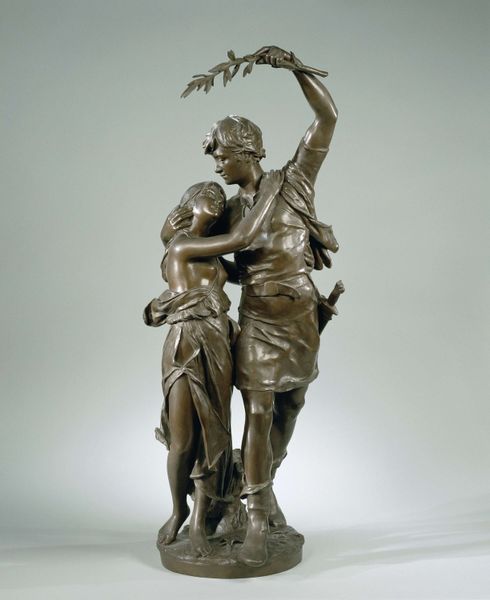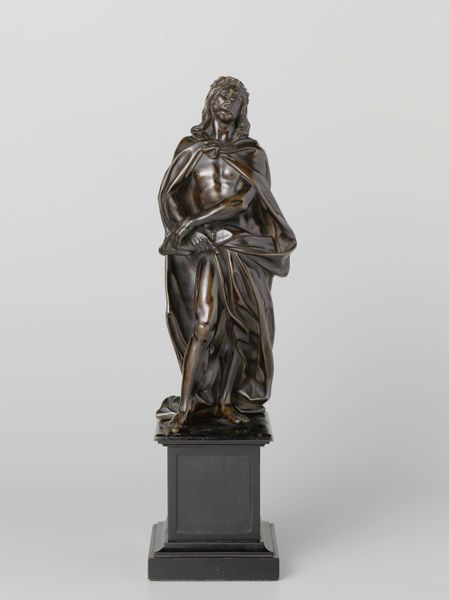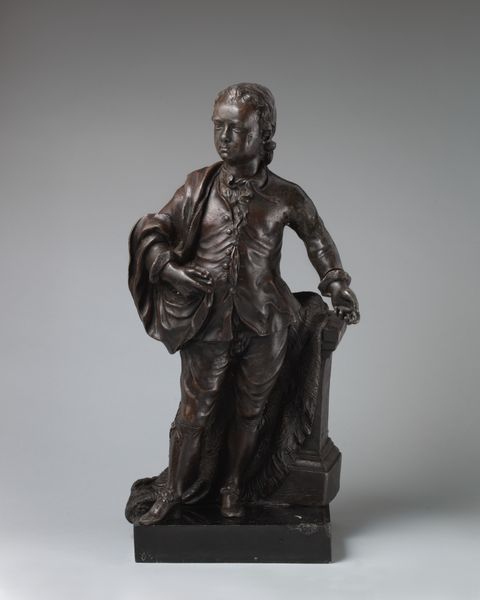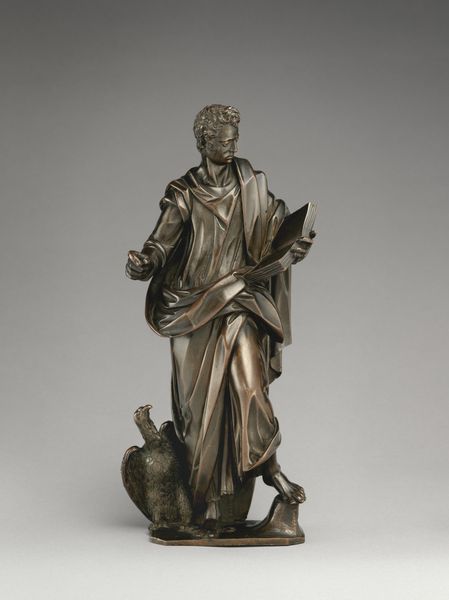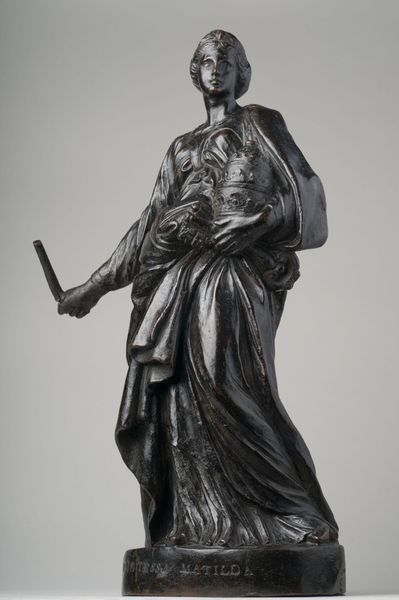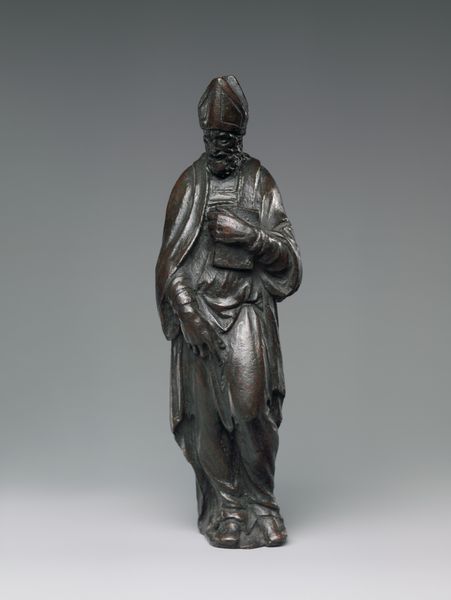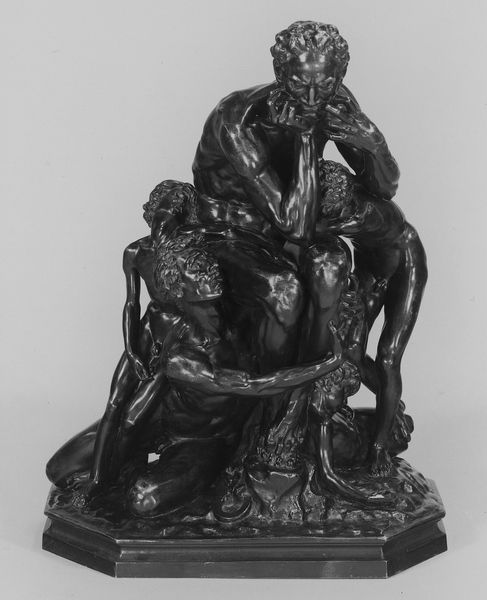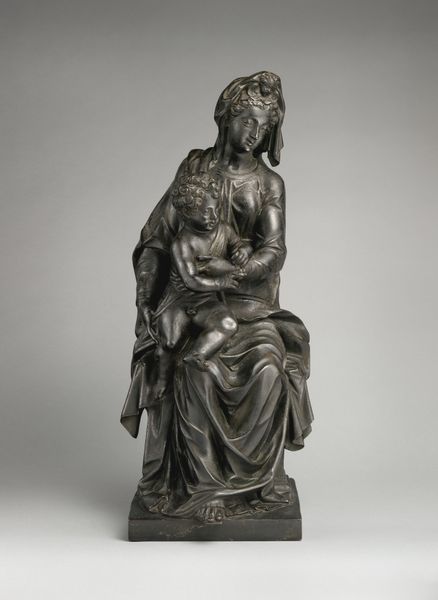
bronze, sculpture
#
neoclacissism
#
sculpture
#
bronze
#
figuration
#
sculpture
#
history-painting
Dimensions: 20 15/16 x 10 x 9 1/2 in. (53.18 x 25.4 x 24.1 cm)
Copyright: Public Domain
Curator: This captivating bronze sculpture is titled "Bacchus and Ariadne," created around 1780 by Guiseppe Boschi. You can find it here at the Minneapolis Institute of Art. Editor: My first thought is the surprising weight and warmth of it. It appears to be in motion, though cast in solid bronze, yet the draped cloth, with it’s precise fold is a stunning accomplishment in balancing weight, emotion and action. Curator: The sculpture portrays the classical myth of Bacchus, the god of wine, discovering Ariadne on the island of Naxos after she had been abandoned by Theseus. Neoclassical art was heavily influenced by classical literature and culture so its focus aligns neatly with history paintings from the era. Editor: Seeing this, I'm immediately curious about the foundry. Consider the sheer skill required to manage molten bronze, to coax it into replicating fabric with such fluid realism. Curator: Certainly, the production aspect is worth pondering. The smooth surface and detailed rendering reflect the values of neoclassicism. The myth was popular with European aristocracy, and pieces such as this reinforced their status. Editor: It's difficult to truly reconcile the raw labour required to make this— the mining, smelting, and the sculpting—with this presentation, meant for genteel contemplation in a home that extracted much of that labour without offering fair compensation in return. Curator: Perhaps but pieces like this reflect a commitment to history, a reflection of how elite societies were attempting to forge a cultural narrative of their own legacy during turbulent political periods. Editor: Perhaps the weightiness isn't just the bronze then, but a societal ambition to immortalize its ideology. Curator: That’s a great way to describe that social impact on the artist himself and on our perception as a viewing public. Editor: Exactly! Considering the relationship between material, artistic expression, and societal power dynamics is what makes studying pieces like "Bacchus and Ariadne" truly captivating.
Comments
minneapolisinstituteofart almost 2 years ago
⋮
Italian sculptor Giuseppe Boschi based this work on the restored remains of an ancient sculpture, then kept at Marbury Hall in England but now in the collection of the Museum of Fine Arts, Boston. The Roman god Bacchus, ruler of wine and the harvest, made the mortal woman Ariadne an immortal when he married her. It is possible that this sculpture presents the couple during a moment of post-marital bliss. However, it is also likely that Bacchus is shown with one of his female attendants, a bacchante. The crown of vines and fur pelt mantle (neither preserved in the antique sculpture fragments) associate her with the wilderness—a link that clashes with Ariadne’s story. Enlightenment artists well-versed in classical mythology could complicate or entirely reconfigure subject matter with subtle alterations in form.
Join the conversation
Join millions of artists and users on Artera today and experience the ultimate creative platform.

